Elaborate Plumage and Complex Mating Rituals
Birds of Paradise refers to birds from the family Paradisaeidae of the order of Passeriformes. It includes 42 species and 15 genera. Most live in New Guinea. An abundance of food enabled the males to focus on attracting a mate, explaining their elaborate plumage and complex mating rituals.
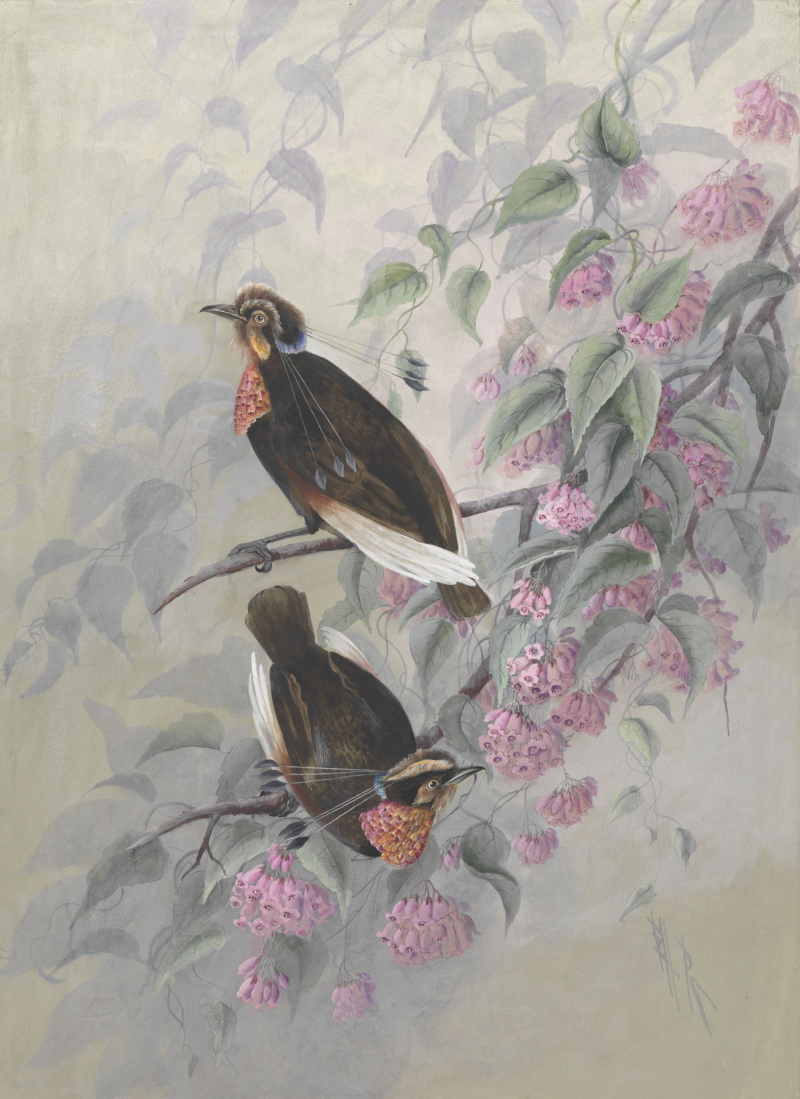
Ellis Rowan, Carola’s Parotias (Parotia carolae), c.1917, nla.cat-vn2686799
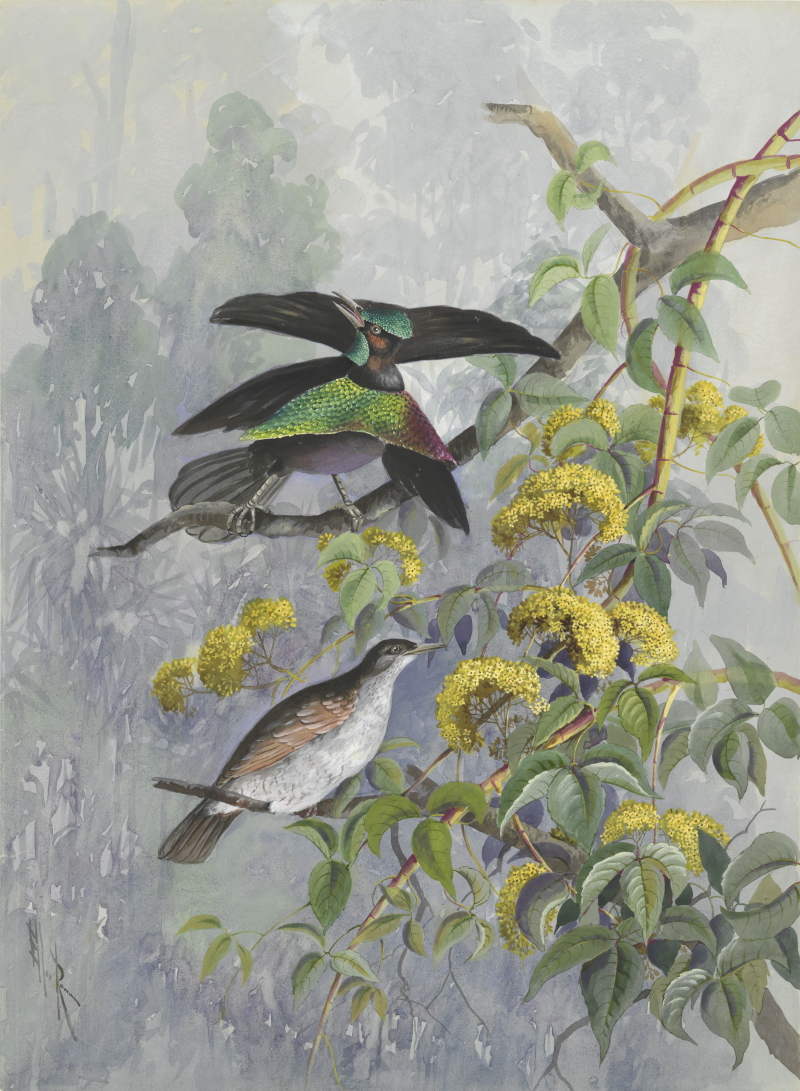
Ellis Rowan, Male and Female Superb Birds of Paradise (Lophorina superba), c.1917, nla.cat-vn2687413
Rowan has captured a male Superb Bird of Paradise in the middle of his particularly elaborate courtship dance. Males usually outnumber the females, making the males work very hard to win female affection.
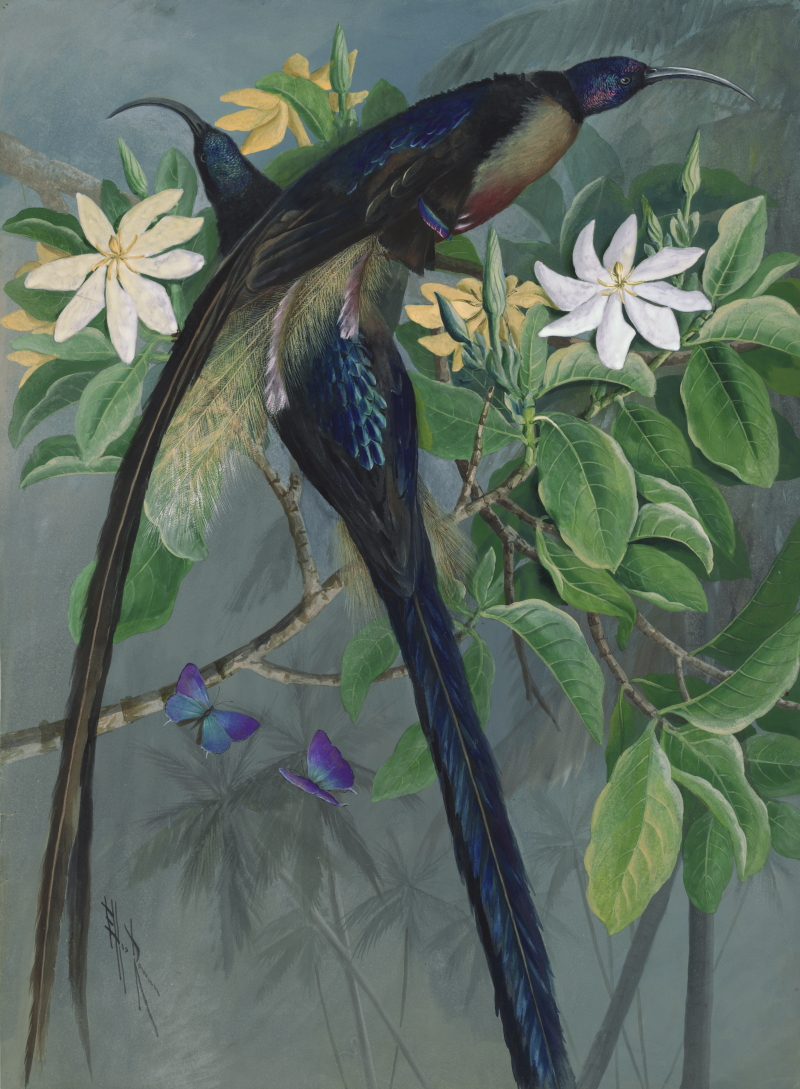
Ellis Rowan, Brown Sicklebills (Epimachus meyeri), c.1917, nla.cat-vn2687390
In this painting, we can glimpse Rowan’s passion for flowers and insects. It also highlights her sophisticated compositional skills.
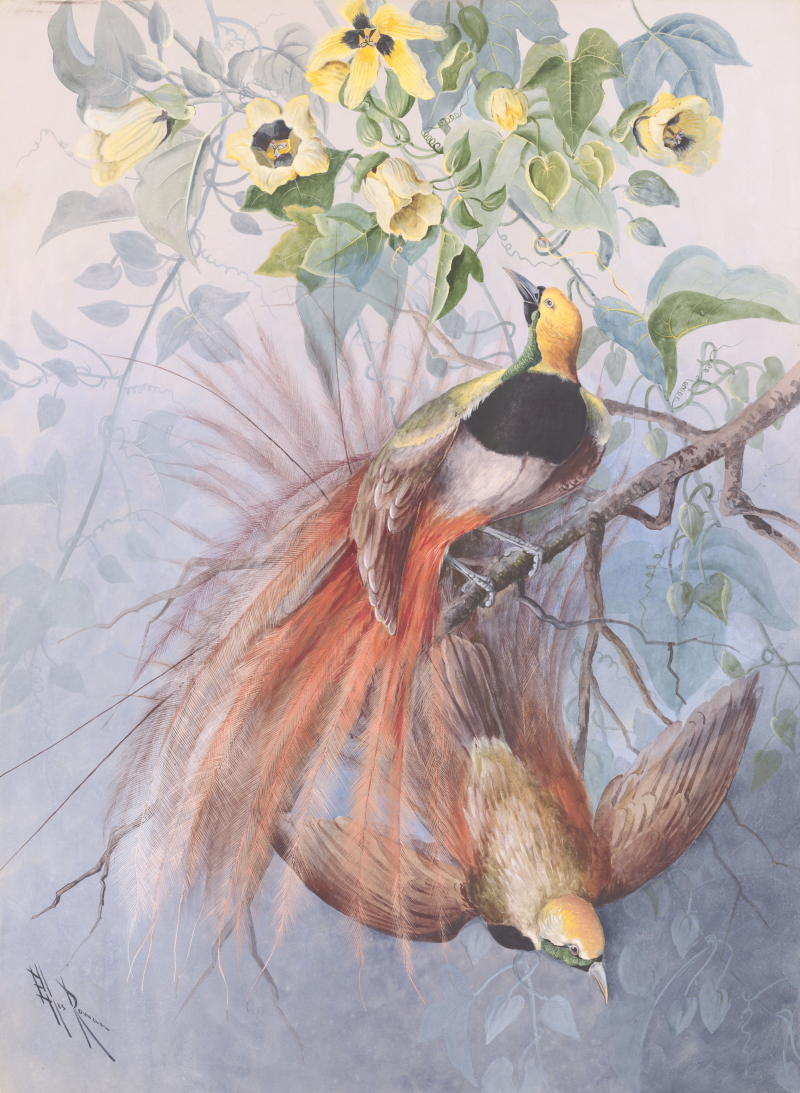
Ellis Rowan, most likely Raggiana Birds of Paradise (Paradisaea raggiana), c.1917, nla.cat-vn2687189
These birds are most likely Raggiana Birds of Paradise, now the national bird of Papua New Guinea which is depicted on the nation’s flag.
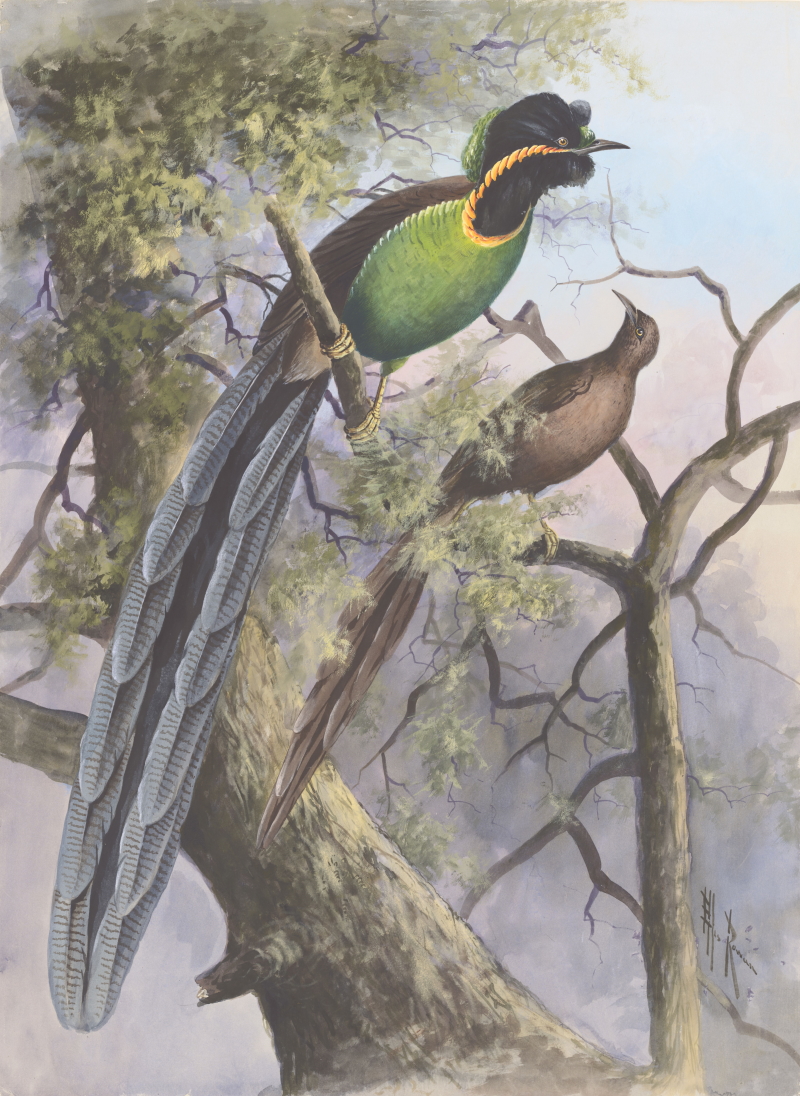
Ellis Rowan, Male and Female Arfak Astrapia (Astrapia nigra), c.1917, nla.cat-vn1165239
Female Birds of Paradise do not possess the bright colours and elaborate feathers of their male counterparts. These male characteristics are designed to impress the females.
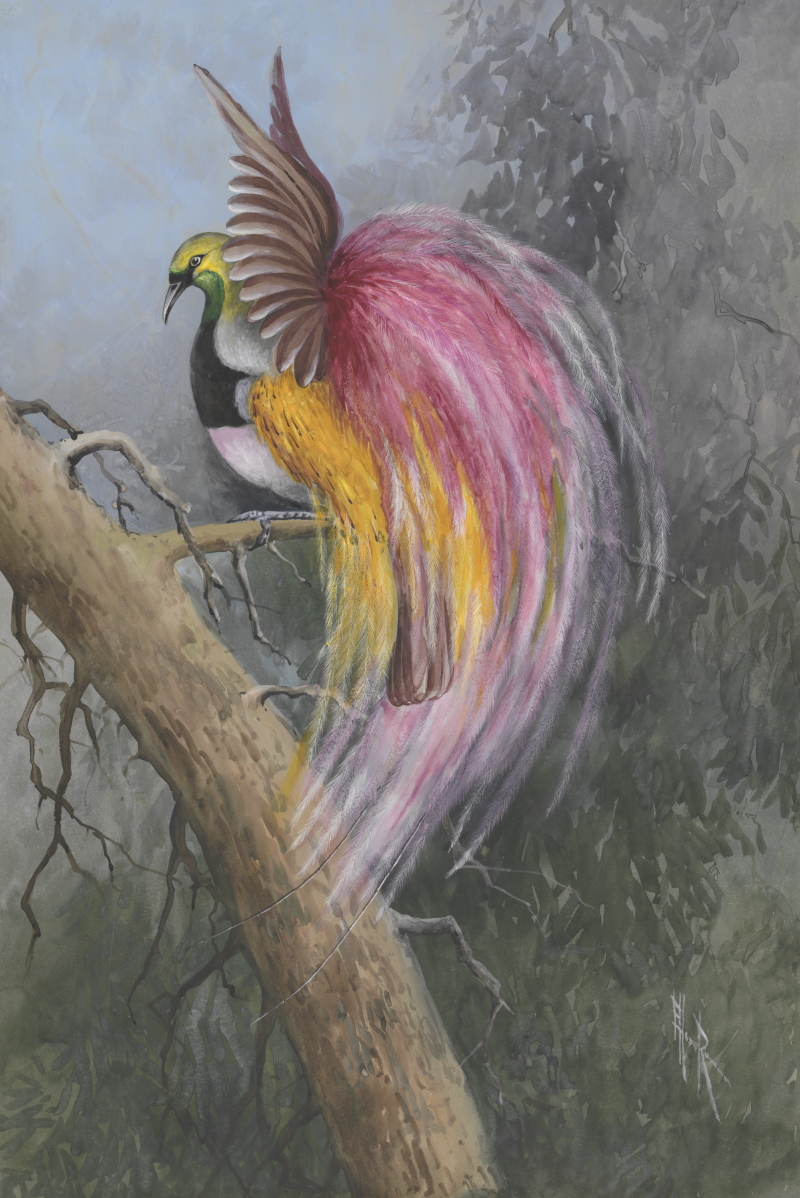
Ellis Rowan, most likely The Empress of Germany’s Bird of Paradise (Paradisaea raggiana augustavictoriae), or Raggiana Intermedia Bird of Paradise (Paradisaea raggiana intermedia), c.1917, nla.cat-vn2687227
Here we see an animated Bird of Paradise showing off its impressive plumes. The idiosyncratic colours and details make it hard to identify the species.
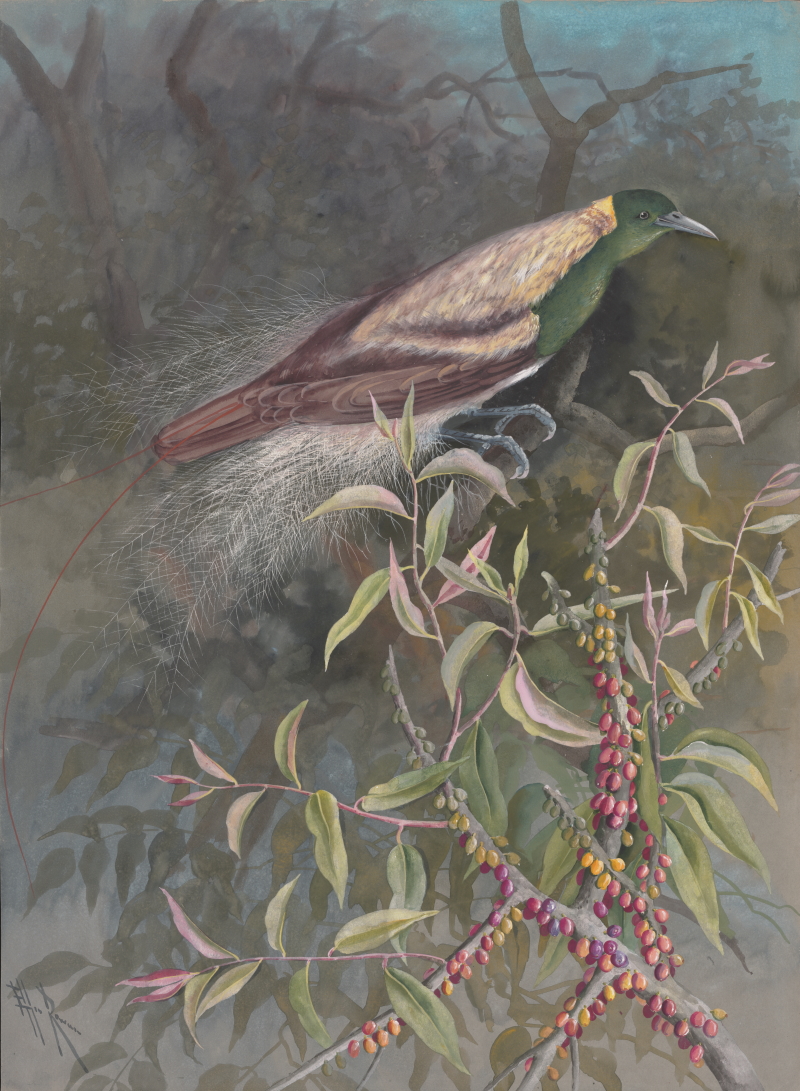
Ellis Rowan, Emperor Bird of Paradise (Paradisaea guilielmi), c.1917, nla.cat-vn1164861
Emperor Birds of Paradise are not as colourful as some of their relatives; however, their fine flank feathers and courtship rituals are impressive.
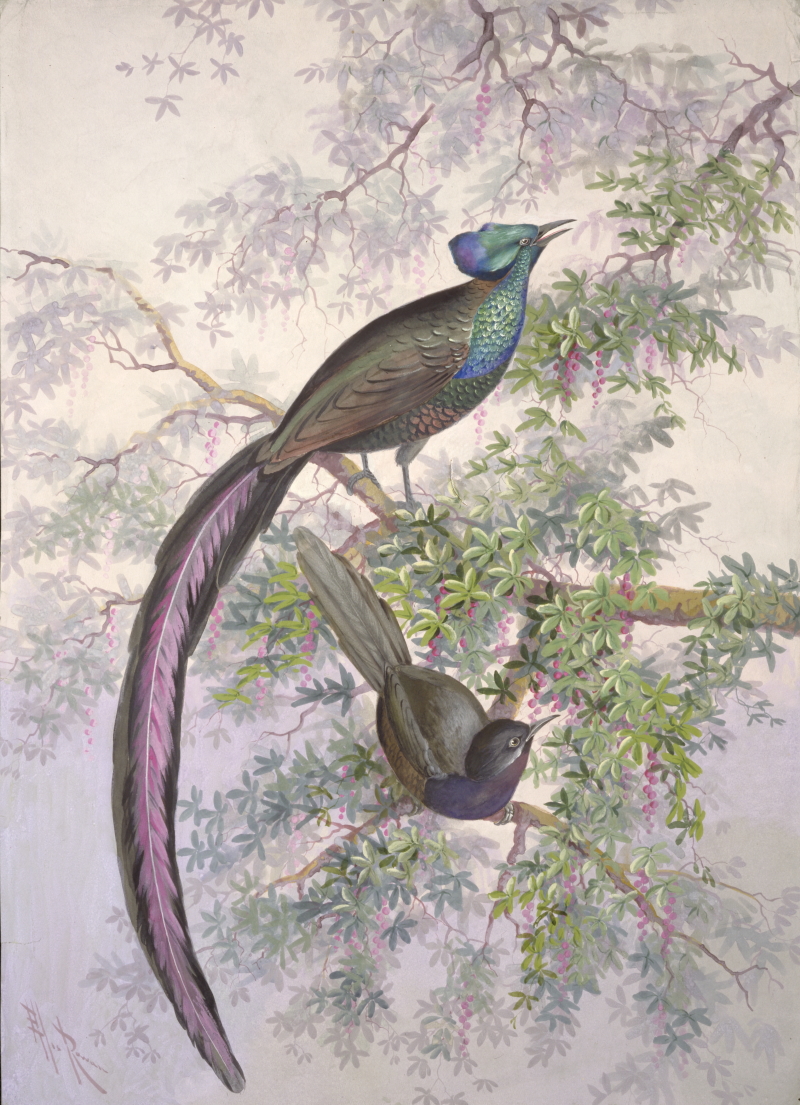
Ellis Rowan, Male and Female Princess Stephanie’s Birds of Paradise, also known as Stephanie’s Astrapia (Astrapia stephaniae), c.1917, nla.cat-vn1165018
This is a captured species of Bird of Paradise that is known as much for the male’s long tail feathers as for its iridescent head feathers.
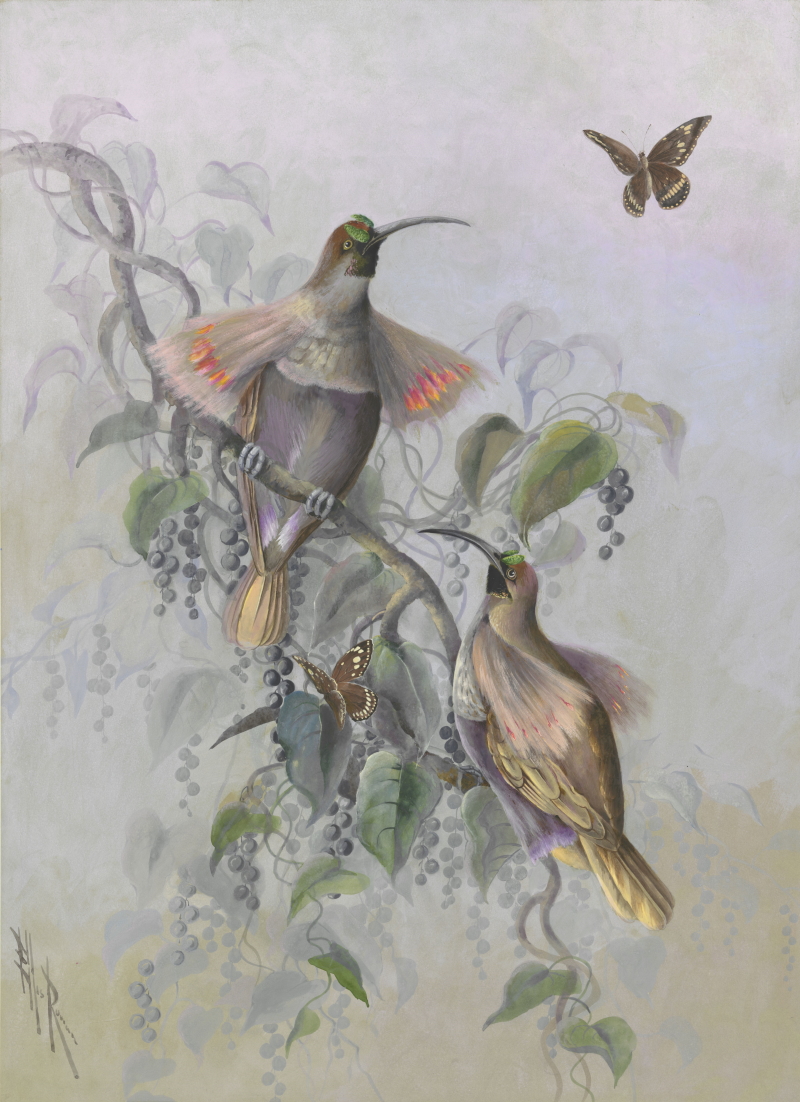
Ellis Rowan, Buff-tailed Sicklebills (Drepanornis albertisi), c.1917, nla.cat-vn1164951
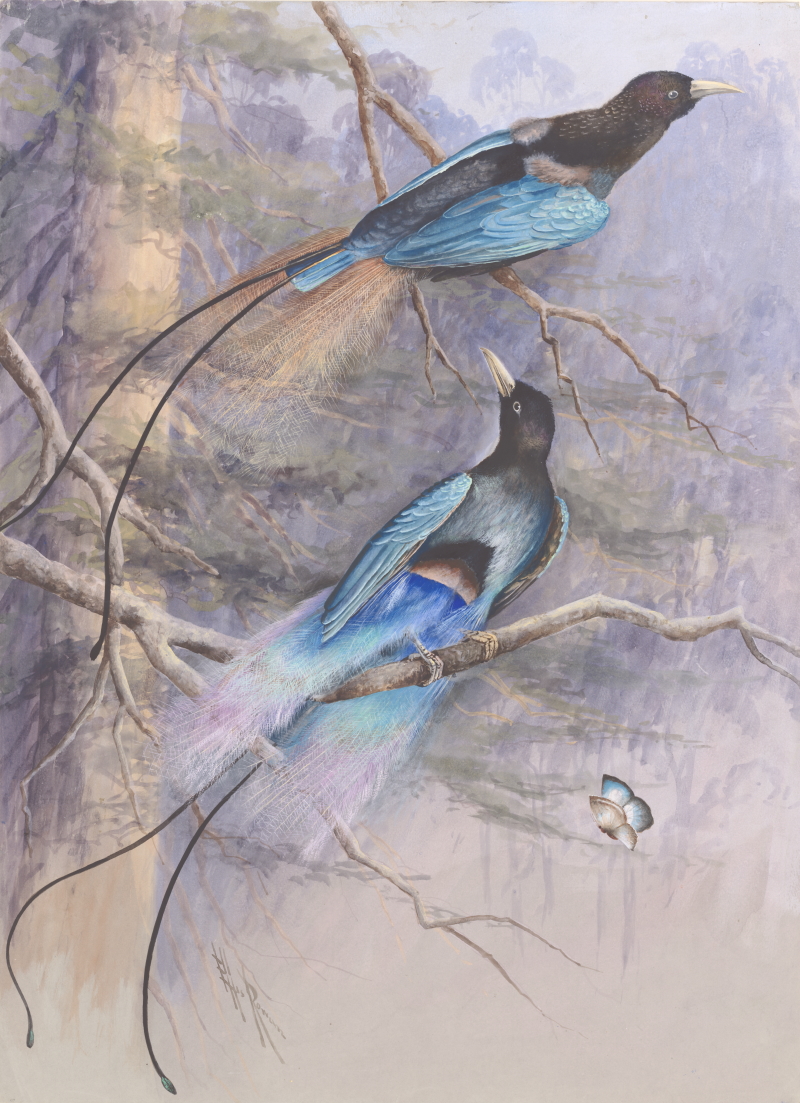
Ellis Rowan, Blue Birds of Paradise (Paradisaea rudolphi), c.1917, nla.cat-vn2686637
Here, Rowan has devised a clever composition to capture a distinctive feature of Blue Birds of Paradise: their fine flank feathers are amber on top and pale blue underneath.
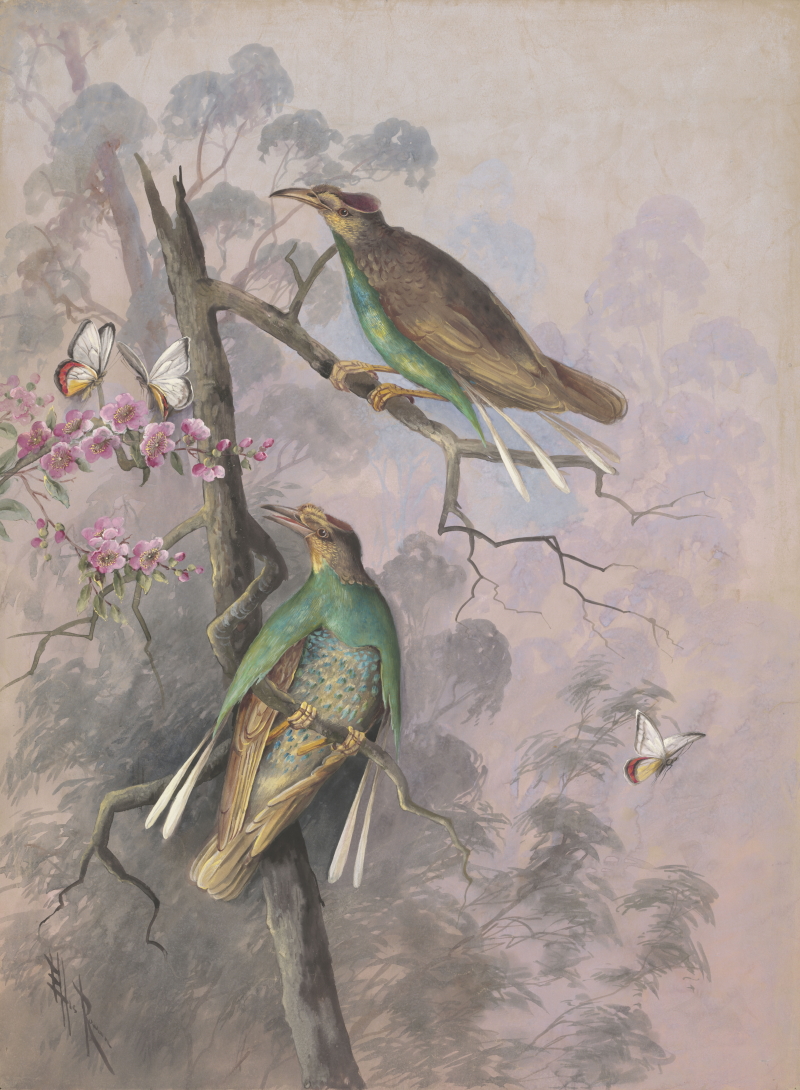
Ellis Rowan, Standardwing Birds of Paradise, also known as Wallace Birds of Paradise (Semioptera wallacii), c.1917, nla.cat-vn1165224
The vivid blue-green breast shield and long, white plumes of the Wallace Bird of Paradise come into their own during courtship displays.
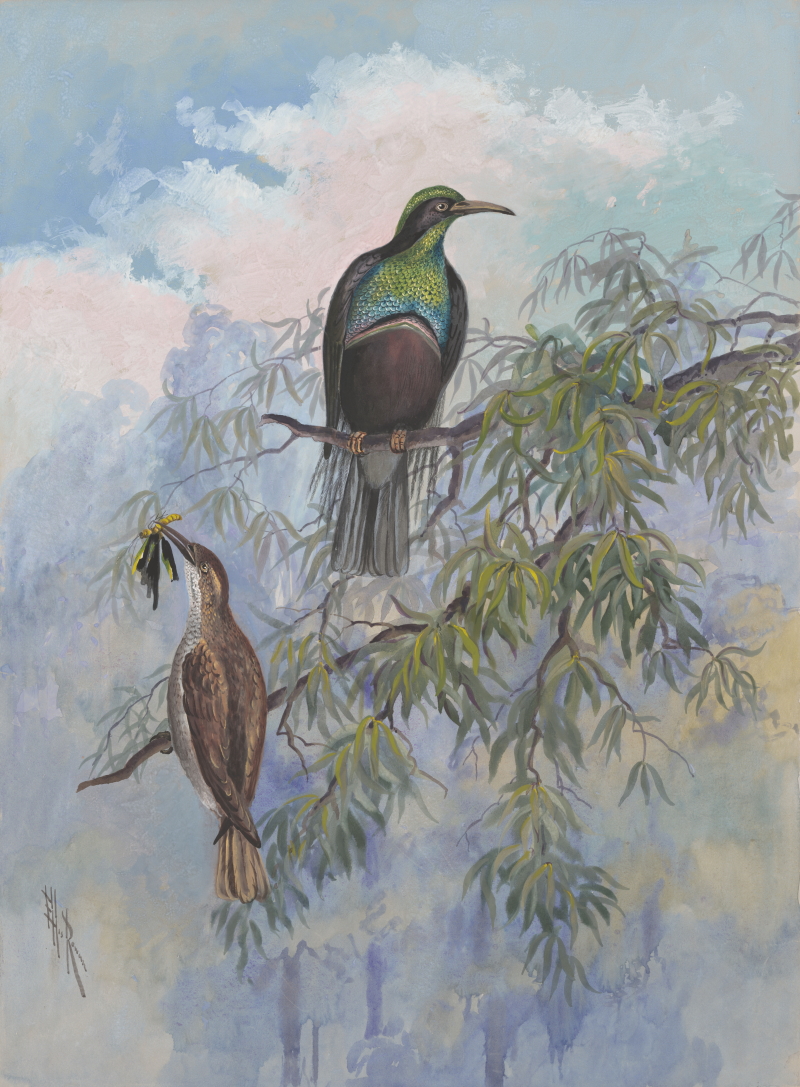
Ellis Rowan, Male and Female Magnificent Riflebirds (Ptiloris magnificus), c.1917, nla.cat-vn2687157
Rowan often included insects in her work, such as in this picture.
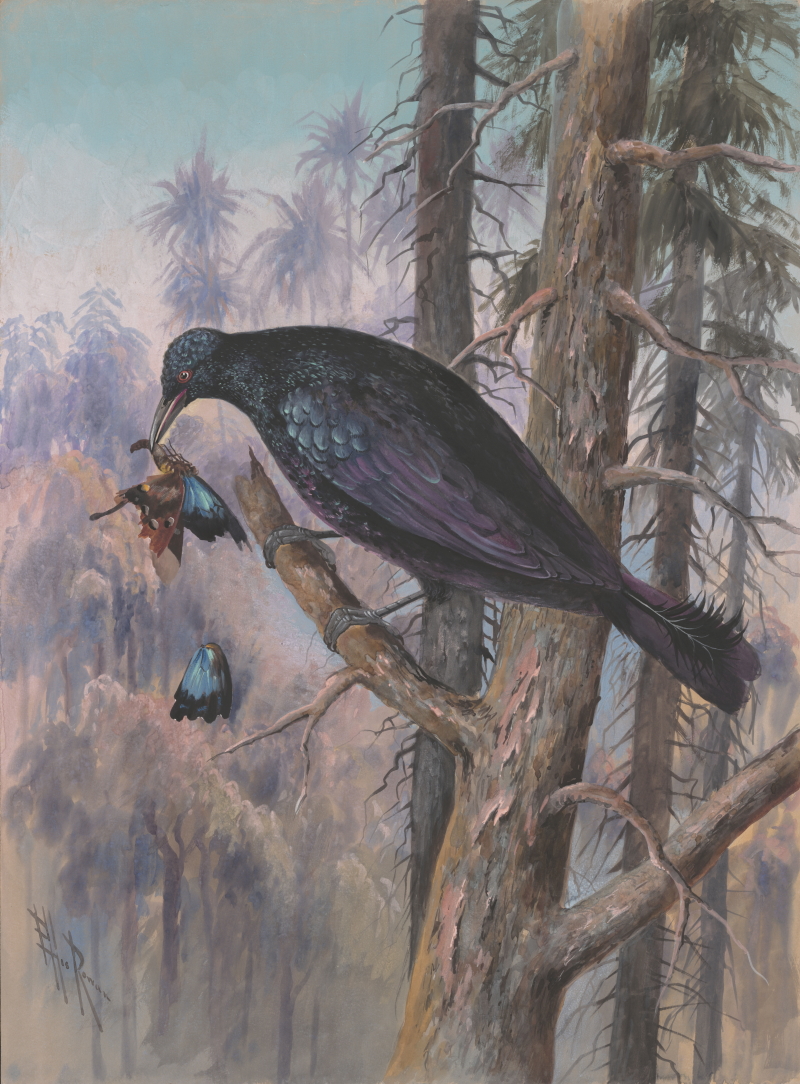
Ellis Rowan, Curl-crested Manucode (Manucodia comrii), c.1917, nla.cat-vn2687913
The Curl-crested Manucode is a Bird of Paradise noted for its vocal abilities, rather than its feathers. Birds of Paradise used to be considered relatives of Bowerbirds, however it is now understood that they are more closely related to the Corvidae (Crow) family, which can be seen in the resemblance between Manucodes and Crows.
Explore the work of Ellis Rowan with the National Library
- View the Birds of Paradise plate designs
- Read more about the life of Ellis Rowan
- Dive into the Library's Ellis Rowan Collection
- View the digitised collection
Return to the exhibition homepage